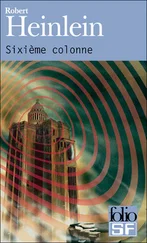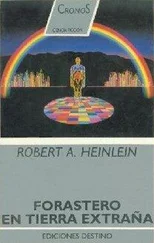An equal number of Buddhists find this appalling, and instead sit with the blank wall behind them, facing another one across the room… and any co-practitioners in the way. What distinguishes Buddhism from any other faith I’ve studied—from most human beings, really—is that the people who face the wall and the people who face away from it have never fought a war over it. They’re never going to agree… but they feel no need to. Buddha himself is supposed to have said, “People with opinions just go around bothering each other.”
I thought both sides were crazy myself, when I first started, and Dr. Amy too for assigning me that program. My second day I mutinied, and reset the Sim for a Ganymede vista, as close as it could come to my own pasture at night. But at the end of the hour, I realized I had wasted the whole thing thinking. And worse, feeling, which was even less helpful. Nostalgia hurt too much. I tried it her way the rest of the week.
I spent nearly every minute of that first week more than half convinced I was wasting my time, waiting for something to happen and then uncertain whether or not anything had. But at the end of the week, I found that I was looking forward to it. Imagine that you’ve been carrying twenty kilos of sand in a backpack without knowing it, all the days of your life. Then one day somebody shows you how to take it off for a moment. It was that much of a relief, I learned, to be able to set down now and then, for whole minutes at a time, the ongoing burden of thought, to briefly silence the constant chatter of my mind compulsively reassuring itself that I was still alive. For periods measurable in whole long seconds, I could sometimes become transparent to my own feelings and emotions. Occasionally there would be what I can only call moments of clarity, when I seemed able to see without distortion and accept without fear. After a week of staring at that silly blank white wall, I was sorry when the time came to change it.
Until I saw the new Sim.
It was a series of paintings, or rather two series, acrylic on canvas, by a PreCollapse artist named Alex Grey, who lived and worked on Terra, in New York, in the twentieth and twenty-first centuries. You sat zazen for a while, and then you started up the image slideshow and looked at the paintings, and at programmable intervals they changed. That doesn’t sound very dramatic—but I’m talking about the kind of art that ought to be served with a whisk broom, so the customer can brush the sawdust off his shirt when he gets back up. Grey made timeless art that probably would have spoken to a Neanderthal. Indeed, many parts of his vision were at least that old.
All the twenty-one paintings in Grey’s Sacred Mirrors series are at least man-tall. First in the sequence is a pale gray human silhouette, facing you, arms slightly apart from its sides, palms outspread, almost as if to say, “Here I am.”
Second painting: the background goes to black, and the silhouette is filled by an extremely realistic skeleton, man-tall and detailed. Third painting: the same skeleton is overlaid by an incredibly detailed and accurate rendering of all the nerves in the human body; the complete electrical wiring system for the skeleton, brain at the top, and nothing else. The golden nerves seem to leap off the canvas, rendered with the same sort of gilt that medieval manuscripts used to be illuminated with. Fourth painting: the nerves vanish, replaced by the circulatory system, rendered in blue, heart in the center of the breast—and for the first time the body is recognizably male, with testicles. The fifth painting details the complete lymphatic system—but this body is female. Successive paintings detail male viscera, then a female musculatory system complete with fetus in a cutaway womb. And finally the body grows flesh, becomes a naked Caucasian woman, facing you calmly. The next painting morphs her into a naked Caucasian man; the next an African woman; then an African man; then an Asian woman, and finally an Asian man.
Each of these figures, from the skeleton on up, has been depicted with such exquisite realism that the next painting has more impact than it might have alone. It shows the psychic energy system. The flesh has melted away, leaving bones and organs and nerves and veins and staring eyeballs… but all are shot through now with gleaming shimmering crackling filaments of energy, and the six chakras of so many mythologies are visible at brain, throat, heart, navel, abdomen, and groin, glowing with power like white coals, and the entire body is enveloped by a translucent pale blue aura made up of infinitely tiny threads of energy, and it is quite clear that all of it—body, chakras, and aura—is physically connected to the rest of the universe, exchanging energy with it. The next painting takes that even further: the flesh and meat and bone melt away, leaving a human-shaped form composed almost totally of the strings and threads of energy that generate it, extending outward to meet the cosmos at head and feet, wrapped in a great bubble of unimaginable power. And in the next painting, even the vague body shape is gone, leaving only a boiling torrent of loops and circles and lattices of universal fire that Sol later told me was remarkably like the mental picture he had going through his head when he was doing his job.
There were more paintings in the series, but most were top-heavy with denominational religious iconography, so I usually chose to fast-forward through them. Such imagery was perfectly fine back in those days, indeed laudable… but now of course feels faintly indecent, a reference to a bloody period in history we would all prefer to erase, if it were not that the horrid lessons learned in it must never ever be forgotten. Those images have all joined the swastika: symbols of spirituality perverted, than which there is no greater evil.
After that came a different series of thirty paintings, which Grey called “Progress of the Soul.” Each depicted one or more of his strange, skinless, fleshless glowing people, connected by powerful invisible energies to the world around them, carrying out a variety of utterly basic human activities. A man with bowed head, praying, a halo of golden energy pouring from his head. A man and woman side by side, staring rapt at the heavens together, information flowing in both directions. A man and woman kissing in close embrace—surely the most intimate embrace ever rendered, since you can pick out every sinew, nerve, or capillary in their bodies, see the normally invisible pulsing energy they create being passed back and forth, heterodyning, lighting the world. The same couple, copulating—an almost nuclear explosion of energy indescribable in words. Then the same couple standing, he reaching around from behind her to touch the hugely swollen belly inside which their child can be seen; that particular painting is framed on either side by an ontogeny sequence of ten images, one for each month, starting with sperm meeting egg, and ending with a full-term fetus. Then one I found it easy to stare at forever, called “Promise,” in which the expecting lovers face one another, and promise each other what they will do for this child they’re making together. On the ground between them is a two-year-old… holding a skull.
There are quite a lot more in the series, but I’m going to stop describing them now, because the next one in sequence, “Birth,” is simply so powerful that I’ve never been able to endure looking at it for more than a few seconds; then my eyeballs start to cook and I have to look away.
But near the end of the series is one often considered Grey’s masterpiece, called “Theologue.” It depicts a man doing exactly what I was doing the first time I saw it: sitting zazen, legs folded beneath, hands placed on his lap in the mudra position, head slightly bowed, meditating. A translucent golden round halo surrounds his head, and a transparent blue egg-shaped halo surrounds his whole body. He is seated at least a foot off the ground, on a kind of net made of interwoven strands of energy running in three directions, bright white and so intense flames lick up from them in the vicinity of the seated man, but do not come close enough to burn him. Behind him, through the grid, gray mountains can be seen to recede forever. All six of his chakras shine with universal fire. It is clear that he is engaged in theologue: in a dialogue with God. Who is himself.
Читать дальше










